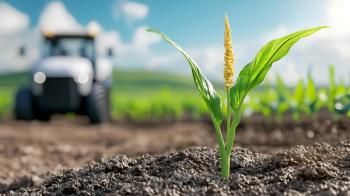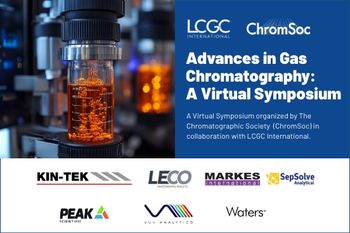
- The Application Notebook-09-01-2013
- Volume 31
- Issue 9
Green Foodomics
Is "green foodomics" another buzzword or a new direction in food analysis? To find out more, LCGC spoke to Professor Elena Iba?ez of the Institute of Food Science Research (CIAL) in Madrid, Spain.
Is "green foodomics" another buzzword or a new direction in food analysis? To find out more, LCGC spoke to Professor Elena Ibañez of the Institute of Food Science Research (CIAL) in Madrid, Spain.
What is foodomics?
Ibañez: Our research group defined foodomics for the first time in 2009 as "a new discipline that studies the food and nutrition domains through the application and integration of advanced –'omics' technologies to improve (consumer) well-being, health, and knowledge." Basically, we believe that foodomics can help provide new answers to some of the important challenges (such as food safety and quality, traceability, new foods for health improvement, and disease prevention) that society is facing in the 21st century.
What chromatographic techniques are commonly used in foodomics?
Ibañez: The techniques typically used in foodomics are those typically used in proteomics and metabolomics, such as liquid chromatography (LC), ultrahigh-pressure liquid chromatography (UHPLC), nano-LC, gas chromatography (GC), and capillary electrophoresis (CE) hyphenated to high-resolution mass spectrometry (MS). These techniques are able to provide us with a great deal of information at different expression levels, including proteins and metabolites. Logically, an important additional step here is the use of adequate sample preparation techniques.
When was the term "green foodomics" coined and what does it involve?
Ibañez: Foodomics can be understood as a global framework that gathers all the new challenges that the food science domain will be facing in the current postgenomic era (some of which were unthinkable a few years ago) and providing new answers through the development and application of new strategies, mainly based on "omics" approaches for large-scale analysis. In this regard, one of the challenges that can impact future generations is sustainability, which is understood as a rational way of improving processes to maximize production while minimizing the environmental impact or, in the words of the Environmental Protection Agency (EPA), "sustainability creates and maintains the conditions under which humans and nature can exist in productive harmony, that permit fulfilling the social, economic and other requirements of present and future generations." Thus, the term "green foodomics" was coined as a way to highlight foodomics goals with regards to green chemistry principles; bearing in mind that sustainability can be not only a word but also a way of doing things.
How easy is it to translate regular chromatography techniques to the green foodomics approach (and can it be cost-effective)?
Ibañez: The application of green chemistry principles to analytical chemistry is not new, although it is true that not much attention has been given to this approach until recently. Although the analytical community has always been environmentally sensitive and the idea of improving analytical methods by reducing the consumption of solvents and reagents has always been at the forefront of the analytical chemists' mind, the first descriptions of "green analytical chemistry" (or clean analytical methods) appeared in the mid-1990s (1). The concept and use of such an approach has evolved over the years reaching approximately 100 publications by 2011. This evolution positively affects foodomics (and green foodomics) since some of the mentioned applications deal with advanced analytical methodologies applied to food science.
The key aspects that should be considered when regarding the adverse environmental impact of analytical methods deal with reducing the amount and toxicity of solvents during sample pretreatment, minimizing solvents and reagents during the separation and measurement steps, and developing alternative direct analytical methods that do not require solvents or reagents. Moreover, they should also consider developing methods that are able to consume fewer resources. All of this has to be done whilst maintaining or improving the analytical performance of the method. This is probably the most difficult task and is responsible for a limited translation of conventional methods to greener ones.
Undoubtedly, laboratories that follow the green analytical chemistry principles, applied or not to foodomics, can have many benefits, which include the cost in terms of waste generation and management, health risks, and resources preservation.
Does green foodomics benefit the consumer?
Ibañez: Green foodomics can highly benefit the consumer since it attempts to improve consumer well being and confidence while, at the same time, decreasing contamination and health risks and preserving sustainability.
Reference
(1) S. Armenta, S. Garrigues, and M. de la Guardia, TrAC - Trends in Analytical Chemistry 27(6), 497–511 (2008).
This interview was edited for length and clarity.
Read the rest of this interview at:
Articles in this issue
over 12 years ago
Determination of Sulfur in Natural Gas by ASTM Method D 6228-11over 12 years ago
Structural Differences in Modified Starchesover 12 years ago
Size Exclusion Analysis of Tween-Containing IgG FormulationsNewsletter
Join the global community of analytical scientists who trust LCGC for insights on the latest techniques, trends, and expert solutions in chromatography.




